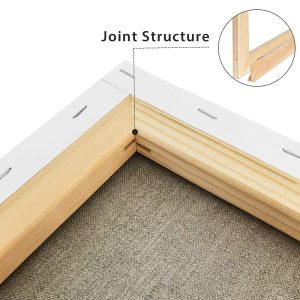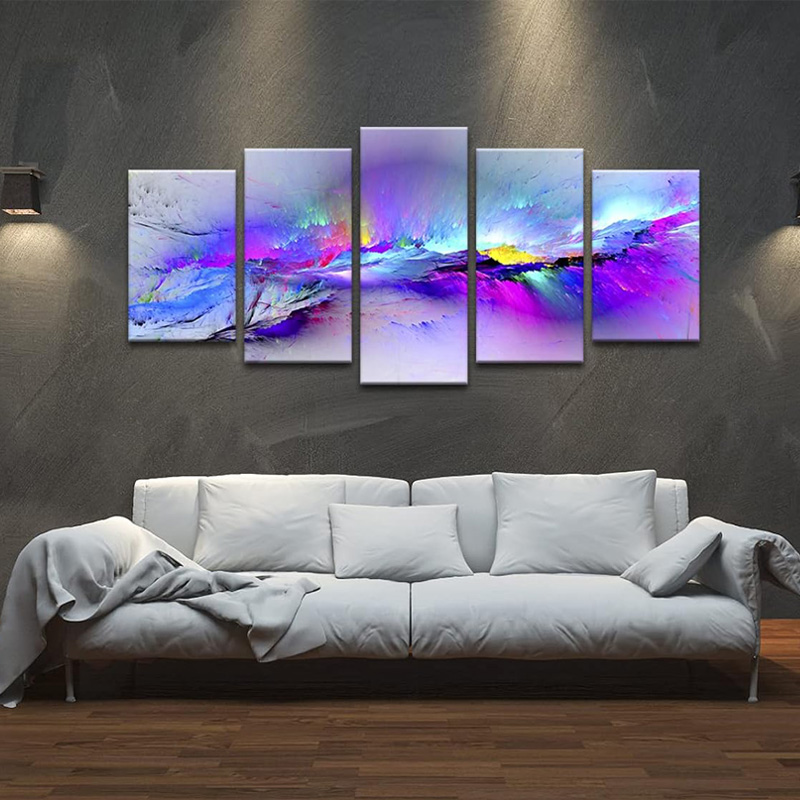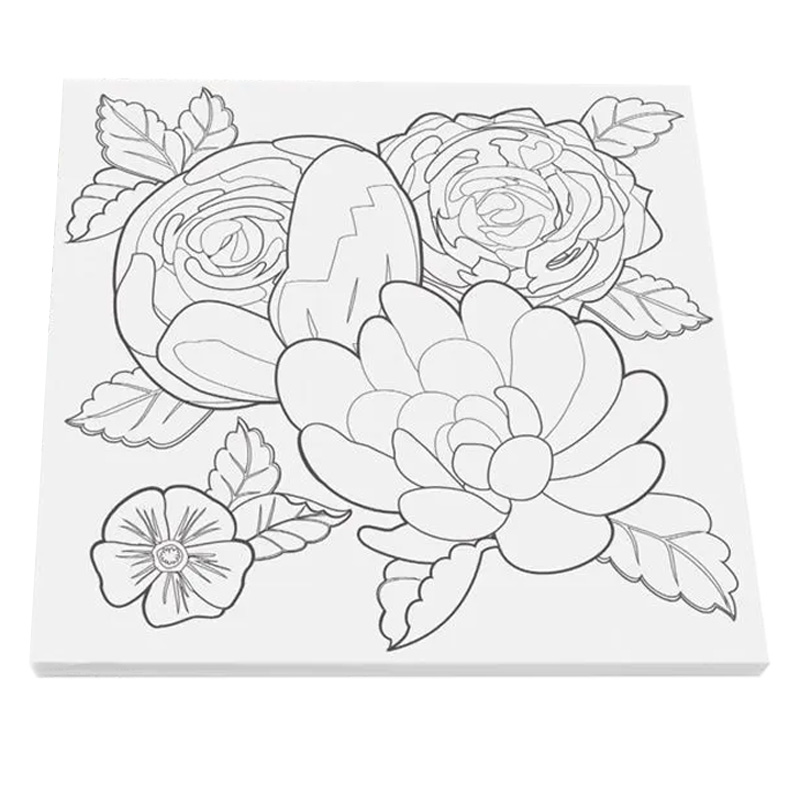When it comes to creating lasting and high-quality artwork, artists know that the right materials can make all the difference. One of the most popular choices for professional and serious amateur painters is linen stretched canvas. This traditional surface has been favored for centuries due to its durability, texture, and the ability to hold paint in a way that enhances the overall aesthetic of a painting. Whether you’re a beginner exploring the world of art or an experienced artist looking to elevate your craft, understanding the benefits and uses of it is essential. In this guide, we’ll take you through everything you need to know about linen stretched canvas, from its features to how it compares with other types of canvases and how to choose the right one for your art.
What Is Linen Stretched Canvas?
It is a high-quality fabric made from flax fibers, stretched tightly over a wooden frame (or stretcher bars). This material has been used for centuries by painters, and its reputation for strength and durability has made it a preferred choice for some of the world’s most famous masterpieces. The canvas is pre-stretched and primed, ready for the artist to start painting. Linen offers a smoother texture than many other canvases, and its natural fibers provide excellent absorbency and paint adhesion, ensuring that colors remain vibrant and true over time.
Why Choose Linen Stretched Canvas?
When it comes to choosing a painting surface, the quality of the canvas plays a crucial role in the outcome of your artwork. Here are several reasons why linen stretched canvas stands out:
- Durability and Strength
Linen has long been known for its strength, and when used as a canvas, it provides a durable surface that resists wear and tear. It’s less likely to stretch, sag, or warp over time compared to cotton canvas. This durability makes linen stretched canvas a wise investment for artists who want their paintings to last for many years. - Texture and Feel
Linen has a fine, smooth texture that enhances the flow of paint. It allows for precise brushwork and fine detail, making it ideal for artists who need a responsive surface for intricate or delicate painting techniques. The natural texture also gives your artwork a refined appearance, often preferred by professional artists. - Excellent Absorbency and Paint Adhesion
Linen’s natural fibers help absorb and hold the paint better than other materials, ensuring that the colors stay vibrant over time. The paint adheres well to linen, resulting in rich, saturated colors with enhanced depth and tone. - Long-Term Value
Linen is considered to be one of the best materials for archival quality. Paintings on linen stretched canvas can endure much longer than those on other types of canvas, such as cotton. Linen’s longevity makes it an excellent choice for artists who intend to sell or exhibit their works for years to come.

Linen Stretched Canvas vs. Cotton Stretched Canvas
While linen stretched canvas is a premium option, it’s not the only choice available to artists. Cotton stretched canvas is another popular material, but it has distinct differences when compared to linen.
- Texture: Linen offers a finer and more uniform texture than cotton, which can sometimes have a rougher or coarser feel. Artists looking for a smooth, refined surface for detailed work will likely prefer linen.
- Durability: It is generally more durable than cotton, with better resistance to wear and tear. Cotton can stretch and sag more over time, while linen tends to retain its shape and structure.
- Cost: Linen is usually more expensive than cotton, due to its premium quality and long-lasting nature. While cotton stretched canvas can be an affordable option for casual or beginner artists, linen is often the choice of professionals looking for the highest-quality material for their works.
- Longevity: Paintings on linen are more likely to withstand the test of time, maintaining their colors and overall appearance for longer periods compared to those painted on cotton.
How to Choose the Right Linen Stretched Canvas
When selecting linen stretched canvas for your next painting, several factors should be considered. Here’s what to keep in mind:
- Fabric Weight
Linen comes in different weights, with heavier fabrics being more suitable for larger works of art or works that require a lot of texture. Lighter linen fabrics are ideal for detailed, more delicate paintings. Pay attention to the weight of the linen to ensure it suits your artistic style and the scope of your work. - Priming
Linen stretched canvas typically comes either unprimed or pre-primed. Primed canvas has a layer of gesso applied to it, which helps to seal the surface and prepare it for paint. Most artists prefer to work on pre-primed linen because it saves time and ensures better paint adhesion. However, if you want more control over the surface texture, you may prefer unprimed linen, as it allows you to apply your own primer and texture. - Size of the Canvas
They comes in a variety of sizes, from small panels for detailed studies to large canvases for grand compositions. Make sure the size of the canvas you choose matches the scale of the work you plan to create. - Stretcher Bars
The stretcher bars used to frame the canvas are another important consideration. Look for sturdy, high-quality stretcher bars that won’t warp or buckle under tension. Many artists opt for cross-bracing to add additional support to larger canvases. - Source of Linen
Not all linen is created equal. The quality of the flax used to produce the linen fabric affects the overall quality of the canvas. Artists should seek linen that is sourced from reputable suppliers known for producing high-quality, consistent fabrics. European linens, particularly those from Belgium and France, are often considered the gold standard in the art world.
How to Care for Your Linen Stretched Canvas
Proper care for your linen stretched canvas ensures that it remains in optimal condition for years to come. Here are a few tips on how to maintain your canvas:
- Store Properly
Keep your linen stretched canvas in a dry, cool environment to prevent moisture buildup, which can lead to mold growth or warping. Store canvases in a place where they are not exposed to direct sunlight, as this can cause the fabric to deteriorate over time. - Avoid Excessive Tension
While it’s important to stretch your linen tightly over the stretcher bars, avoid overstretching. Excessive tension can damage the fabric and lead to cracking, especially when the canvas is exposed to changes in temperature and humidity. - Clean Gently
If you need to clean your linen stretched canvas, use a soft brush to remove dust and debris. Avoid using water or cleaning chemicals, as they can damage the fibers and paint. - Repair Damaged Areas
If the canvas becomes damaged or torn, you can repair it by patching the affected area with another piece of linen. Be sure to gently sew the patch in place and re-stretch the canvas to ensure a smooth, taut surface for painting.
Conclusion
Linen stretched canvas is a superior material for artists seeking a high-quality, durable, and versatile painting surface. With its long-lasting nature, smooth texture, and exceptional paint adhesion, it provides a perfect foundation for creating beautiful works of art that can stand the test of time. By understanding the benefits, differences from cotton, and factors to consider when choosing it, you’ll be well-equipped to make an informed decision and elevate your painting projects to a professional level. Whether you’re working on a fine art masterpiece or experimenting with new techniques, it offers the ideal surface to bring your artistic vision to life.





